Rare images and video reveal details of U.S. Navy seaplane lost in Pearl Harbor attack
NOAA and University of Hawaii archaeologists conducted a detailed archaeological survey of a U.S. Navy PBY-5 Catalina airplane sunk during the Japanese attack at Pearl Harbor on Dec. 7, 1941.
Coordinated by NOAA maritime archaeologist, Hans Van Tilburg, a team of students from the University of Hawaii Marine Option Program produced the first systematic photo and video documentation of the wreck site.
A view of the aircraft fuselage beginning at the bow, showing the open forward gunner's turret, anchor well and cockpit.
The navigator's window in the hull can be seen, covered with silt and marine growth.
The camera pans over the break in the fuselage, then left over the wing and engine nacelle (housing). An abundance of coral growth can be seen covering the wing, which is partially buried in sediment.
After reaching the wingtip, the camera turns around and heads back towards the fuselage down the trailing edge of the remaining wing, ending back at the bow.
Credit: NOAA Office of National Marine Sanctuaries
A downward facing view of the aircraft wreck, beginning at the bow with the forward gunner's turret, anchor well and the portside of the cockpit.
The camera pans past the break in the fuselage and turns left over the starboard wing, showing the engine nacelle (housing) on the left side and ending at the wingtip.
Credit: NOAA Office of National Marine Sanctuaries
Video begins with the camera moving into the forward gunner's turret into the bombardier's compartment, revealing the bottom of the compartment, where the bombardier would have been kneeling.
The aluminum catwalk can be seen leading aft into the pilot's compartment, where through the passageway both the pilot and copilot's seats can be seen.
The view then pans down, showing the bottom of the compartment and arm rests on either side of the keel, where bright gaps in the hull can be seen.
The camera then rotates showing the open ports in the bow, and the translucent shield over the bombardier's window, covered with growth.
Credit: NOAA Office of National Marine Sanctuaries
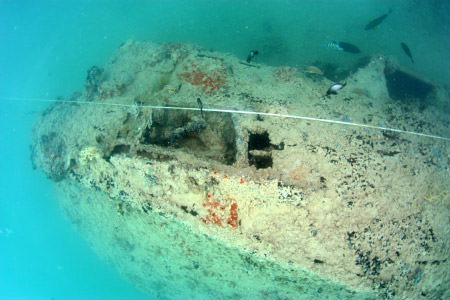
PBY anchor in anchor well and cockpit (upper right).
Credit: UH Marine Option Program
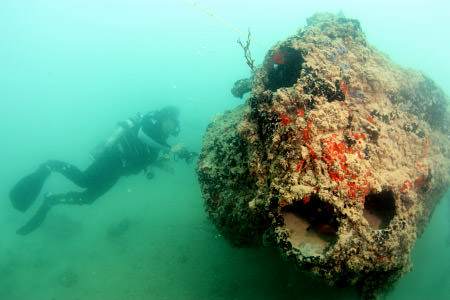
A diver examines the gunner's forward turret on a PBY-5 Catalina resting on its right side.
Credit: UH Marine Option Program
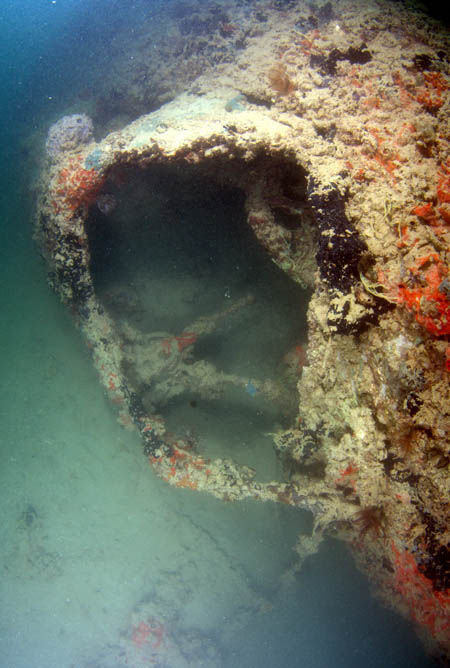
Cockpit detail showing portside wheel and throttle controls (left) extending downward (to the right) from the overhead.
Credit: UH Marine Option Program
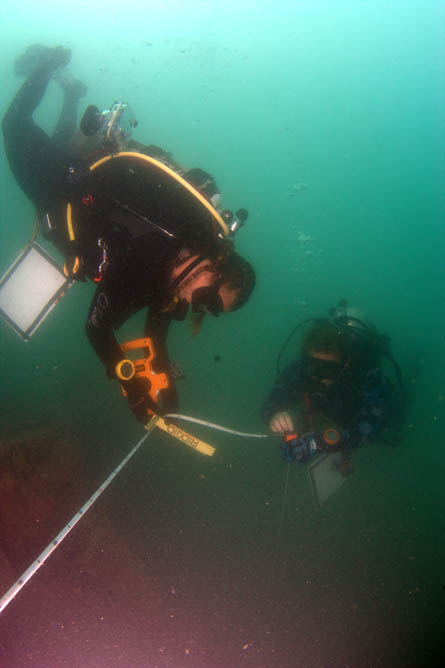
Divers taking measurements for the site plan.
Credit: UH Marine Option Program
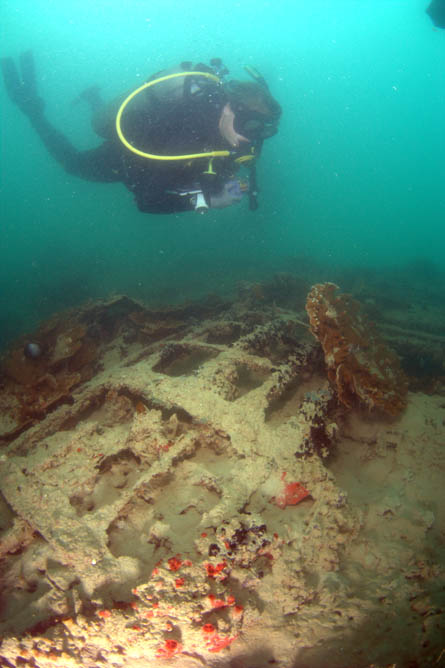
The starboard engine nacelle (housing) extending into the silt.
Credit: UH Marine Option Program
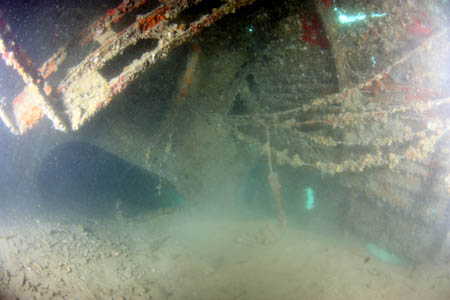
Silted interior of the fuselage in the area of the mechanic's compartment.
Credit: UH Marine Option Program
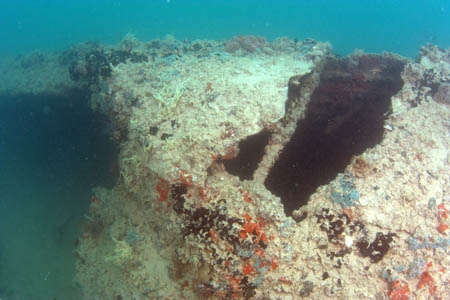
The tear in the port hull and mid-fuselage break.
Credit: UH Marine Option Program
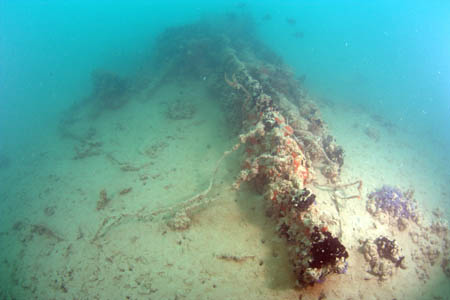
Structure members of the tail section lie a short distance away from the starboard wingtip.
Credit: UH Marine Option Program
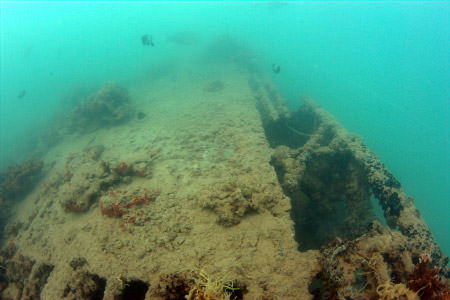
Upper wing surface, leading edge to the left.
Credit: UH Marine Option Program
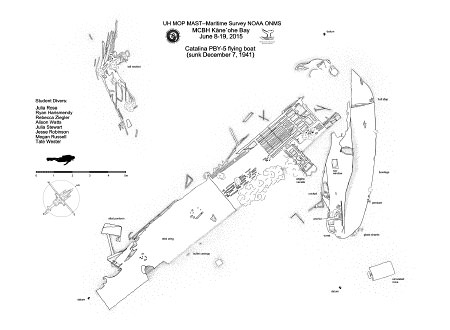
Final site plan for the 2015 student survey
Credit: NOAA/ONMS
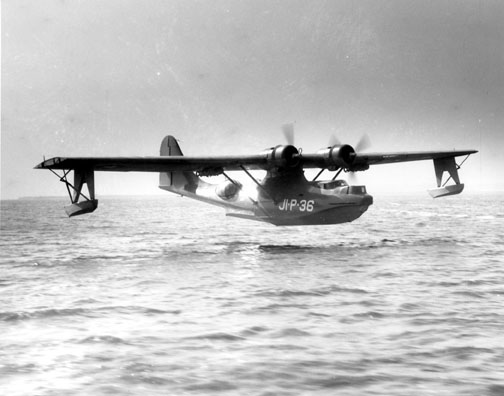
PBY-5 making a landing.
Credit: USN

